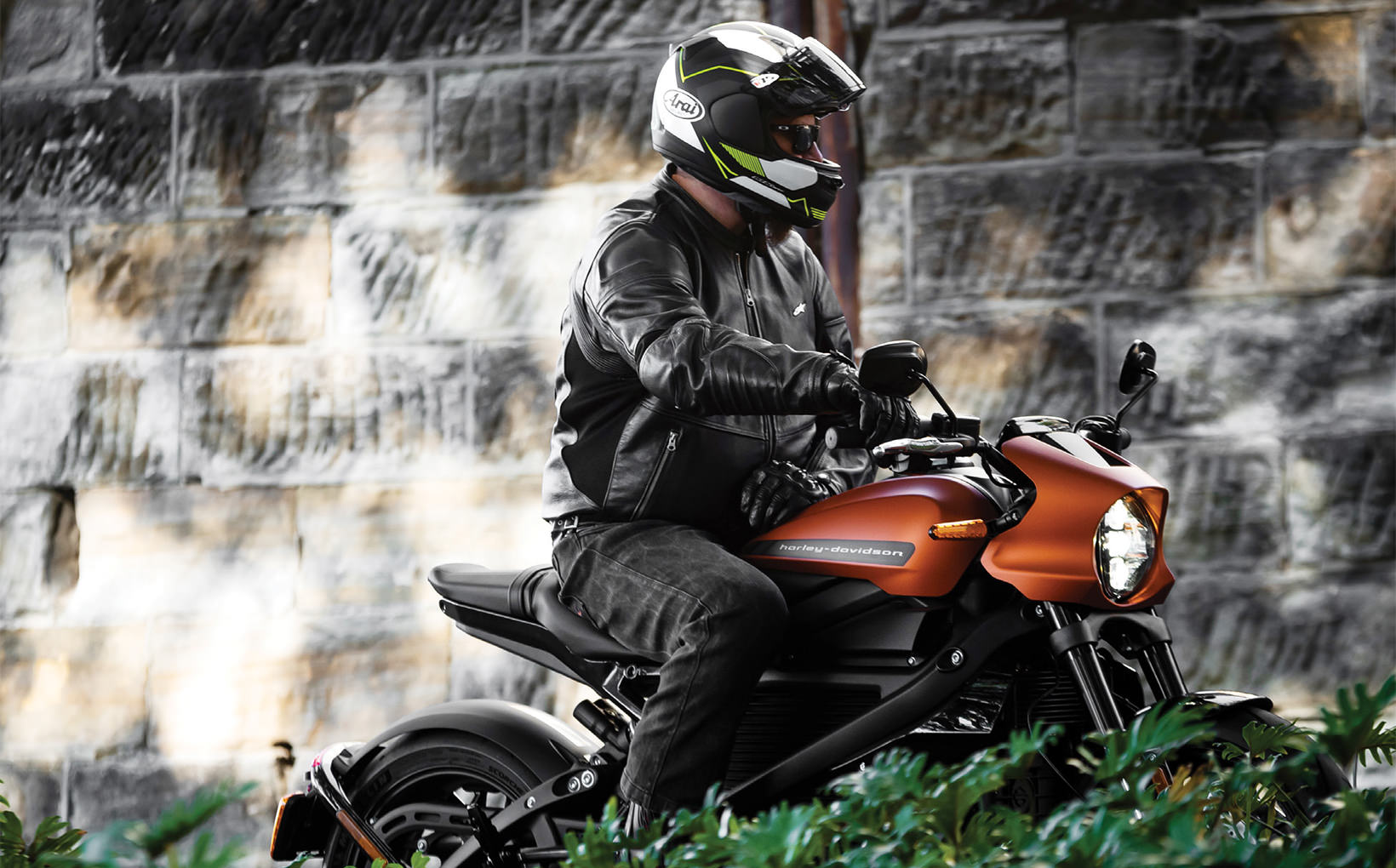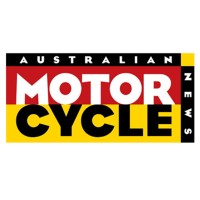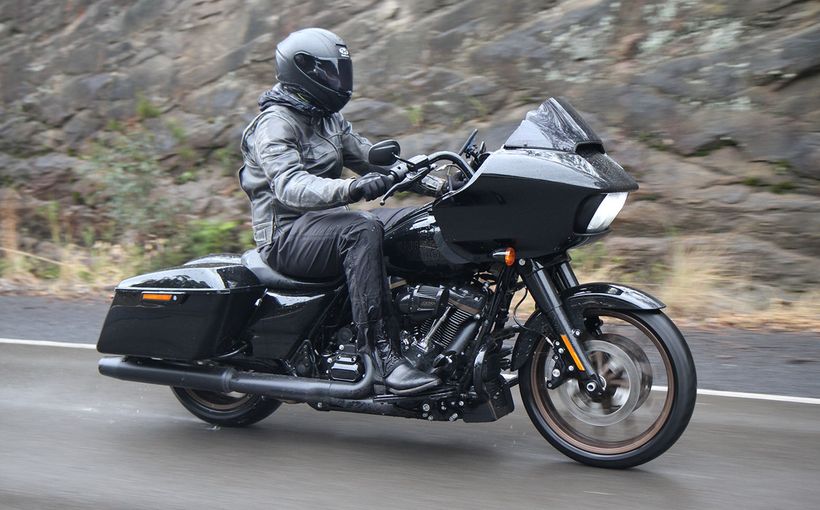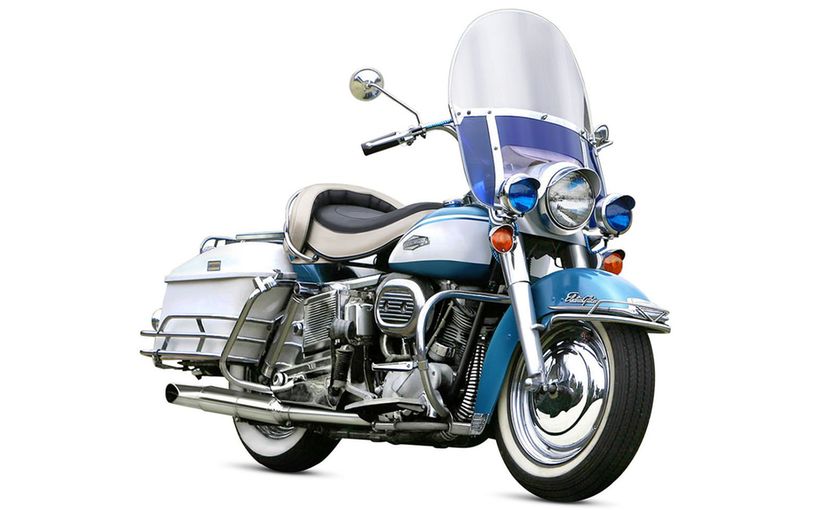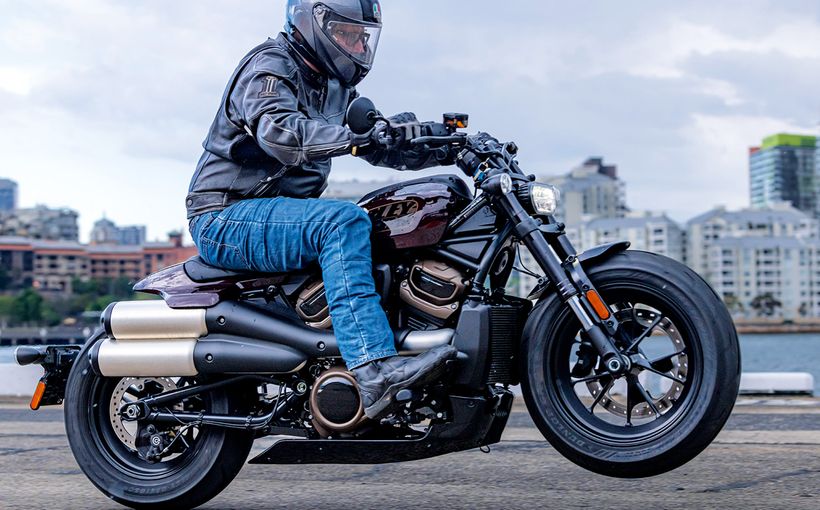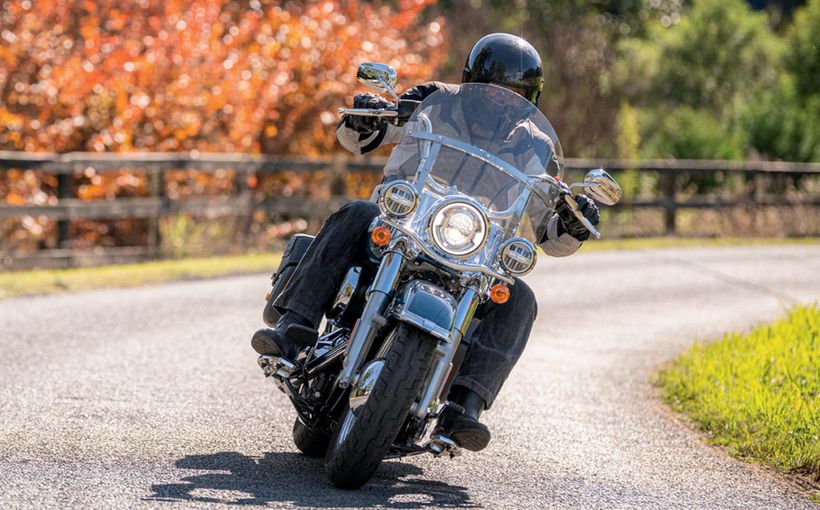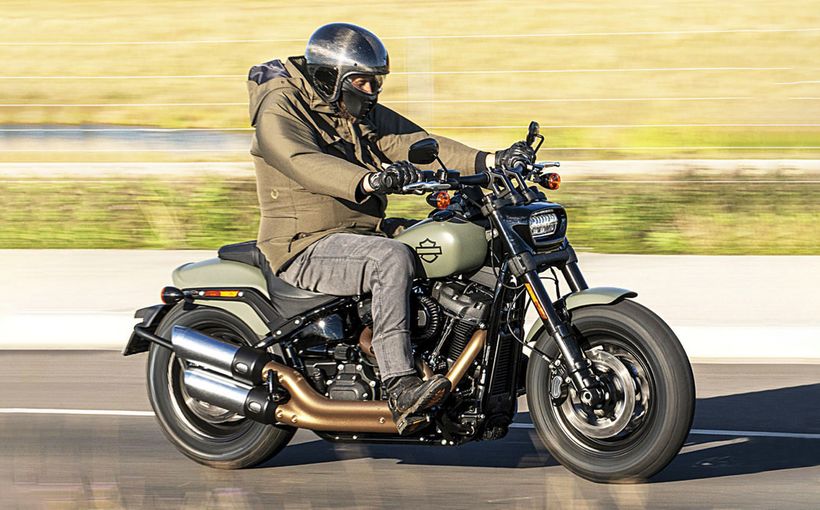2020 Harley-Davidson LiveWire: Plug & Play

TEST: PETE VORST PHOTOGRAPHY: INCITE IMAGES
As I sit astride the LiveWire for the first time, I wonder if this is the future of motorcycling. Will bike enthusiasts be scavenging the classifieds looking for a vintage LiveWire in 30 years’ time, the machine that cemented Harley as an iconic maker of electric motorcycles?
Will the LiveWire or its successors be wearing a Harley-Davidson 200th Anniversary Edition badge someday, or will it become a forgotten experiment, another victim of the throwaway electronics consumer society? No one knows if the LiveWire will become a collector’s item or even a successful model, but EVs are coming and bitching about it isn’t going to change it.
Not to be outdone by Yamaha’s drawn out Ténéré launch, Harley first started playing with the LiveWire in 2010 and has been teasing and flashing and leaking details ever since. But, finally, after 10 long years, we finally get to sample a production model on Aussie roads.

Buying an EV is an investment in the planet’s future and loading up on a LiveWire is a hell of a personal investment, too, at $49,995 ride-away and, I think, the bike’s biggest hurdle in achieving instant success. For that you get an electric motor and battery lodged in a cast-aluminium chassis, with premium Showa suspension and Brembo brakes – not the sort of componentry you expect to find on a Harley. There’s a slew of other electric models in the works in Milwaukee but the LiveWire will sit at the top of the heap.
Price aside, the motor is the centrepiece of LiveWire, just like it is on every Harley that has come before it. The Motor Company has put the motor and associated kit in a shiny silver housing underneath the contrasting black finned battery for prominence. The so-called Revelation motor is water-cooled and produces 78kW of power – or 105 horses in the old coin – which doesn’t sound like much in this age of 200hp missiles. That figure is a touch more than a KTM 790 Duke’s figure and a little less than Kawasaki’s Z900’s – and I don’t recall many people whinging about a lack of power from those two.




But never mind that, an electric motor – much like a V-twin – torque is where it’s at and the Revelation pumps out 116Nm of torque from the second you open the throttle until the second you close it. A little perspective perhaps; Ducati’s new fire-breathing Streetfighter V4 makes 110Nm of torque at 9666rpm, the Livewire makes 116Nm from 1rpm all the way through to 15,000rpm. Just let that sink in for a bit.
If you’ve only ever ridden gas guzzlers, it’s hard to image what uninterrupted torque feels like. It’s instant, it’s everywhere and there’s lots of it. There’s no need to drop back gears – shit, there aren’t any gears – just twist the throttle, hold on, enjoy the pleasantly audible screech from the engine, watch for slowing traffic, and try not to snort when you laugh.
Harley claims the Revelation motor will punt the 251kg LiveWire from 0 to 100km/h in just three seconds and it feels like it would reach its 177km/h top speed in not much more than that.
The lack of noise as you ride along is odd at first; there’s just the whir of the engine that turns into a shriek as the revs increase and the wind rushes past you faster. Each to their own, but I loved the noise it makes when you’re on the... you know, gas. It reminds me of the whine of a supercharger. Because it’s so quiet when you’re just doodling along, you become acutely aware of how noisy combustion vehicles are, especially in tunnels. It’s quite odd thundering along on a Harley and being out-gunned by a scooter in the sound department.

The Revelation is powered by a 15.5kW lithium-ion high-voltage Samsung battery that Harley has named the Renewable Energy Storage System (RESS). The battery can be charged at home from your 240-volt powerpoint using the charging cable supplied under the seat. Harley reckons this will take 12.5 hours, or you can head to a charging station and hook up to a DC Fast Charge (DCFC), aka a Level 3 charger, and have the LiveWire fully charged in an hour.
Each LiveWire dealer will be fitted with a DCFC station which will be made available to LiveWire owners free of charge. But it might be best to plan ahead there as there’s only 10 appointed dealers Australia wide at this point. The battery comes with a five-year unlimited-kilometre warranty, and while H-D can’t – or won’t – supply the price of a new battery, by the time it’s out of warranty the cost of this tech should have plummeted.
In addition to the regular plug-in charging methods, the regenerative braking feature pumps power back into the battery on deceleration and adds engine braking into the mix, too. With regen turned off, she’s a bit two-stroke like, and as you go sailing into a turn you soon learn to get your braking in order instead of relying on the engine to slow you down.

With a full charge, the assistance of regenerative braking, and running in Range Mode which nets you the most kilometres, Harley reckons you’ll get 235km of city riding out of a charge. Combine that with some highway miles and H-D says range will drop to 152 kilometres.
The rest of the LiveWire is pretty conventional. It offers four ride modes controlled via a 4.3-inch Bluetooth TFT dash that’s bright, easy to read and intuitive to navigate. Each mode offers a noticeable change in the bike’s character. Range mode gives you maximum mileage from the battery, restricts power and winds up the regen, Rain mode reduces power, smooths out the delivery and reduces the effect of the regen feature in a bid to prevent the rear wheel locking on a wet surface. Road mode reduces power and gives a smoother throttle response, while also feeding in a measure of regen that makes this mode feel the most like a conventional-engined bike to ride. Sport mode gives you full power, instant throttle response – without being snatchy – and the rider safety aids are less intrusive.

In addition, there are three custom modes that you can program as you see fit and save for a later date.
The regeneration effect is wound right up in both Range mode and in Sport mode and the engine braking feels a fair bit stronger than when riding an internal-combustion engined machine. And it actually requires a bit of getting used to before you stop your body lurching forward when you get off the throttle.
Harley’s Reflex Defensive Rider System (RDRS) that also feature on its touring and CVO ranges also come into play to varying degrees depending on the mode. The Bosch developed six-axis system features cornering ABS, wheelie control, rear-wheel anti-lift and traction control.
In Sport mode I was able to rip a very discreet burnout, so spin is fairly unrestricted. The route and road conditions I took never tested the limits of the ABS or traction control, but that much torque put to the ground and with no hint of slip except when bunny hopping speed humps means the traction control is doing a sterling job without me knowing.

The seating position is sporty, with a long stretch to the motocross-style ’bars, and high pegs that meant my legs where cramped and a bit of sore after a while in the saddle. The seat tried its best to hurt me, but luckily you aren’t going to get far before you need to stop and rest the buttocks, so that’s not a big issue. It has a pillion 1 seat you’d only put an enemy on, but Harley sells a pillion seat cover that turns it into a single seater, so you only have to subject someone to it in emergencies.
Even at the launch’s restrained speeds, and on the only moderately interesting corners we encountered, the Showa rear shock wallowed with my portly 108kg dimensions atop it. And the 43mm USD big piston Showa fork felt like a seized pogo stick, jarring on potholes and speed humps and causing a nervousness through bumpy corners. On smooth corners though, even at speed the LiveWire feels extremely stable thanks to its long wheelbase and hefty weight. Both ends are fully adjustable, and I have no doubt that you could tune its ill-mannered traits out with some fiddling of the adjusters and that’s just what we’ll do when we get our hands on one for a more thorough test soon.
The LiveWire’s stability seems to be the only discernible effect of the bikes weight once you’re on the move, the battery and motor are carried low in the chassis and it doesn’t feel like a 250-kilogram motorcycle to ride. It’s easy to flick from side-to-side when you’re having a play while also being nimble and un-cumbersome at slow speeds.

Twin four-piston Brembo Monobloc calipers feature up front and are matched to a set of 300mm rotors that do a good job of pulling the unit up; they are more than adequate without being remarkable, but they are trying to pull up 251 kilograms of bike plus my weight so they’ve got their work cut out for them. The twin-piston rear Brembo lacked a bit of feel and felt a bit doughy which might improve as the brakes bed in.
I’m no closer to answering my preliminary questions than I was when I first sat on the thing. It’s certainly a capable motorcycle as long as you don’t want to travel too far. But is it $50k worth of capable? The motor certainly keeps you entertained, as does the whir from it, and compared to the rest of Harley’s range, handling and braking wise it’s light years ahead.


Harley is trying to attract a new type of customer to the fold, a customer with plenty of coin, who’s younger and has a sense of environmental responsibility. But it’s also a rider who doesn’t stray too far from home or the local charging station.
Charging and range is becoming less of an issue, but that price tag is the bit that may turn punters away, especially when you can buy a small electric car from the likes of Hyundai or Nissan for very similar money. The bigwigs from Harley Australia wouldn’t hand over pre-order sales figures, which probably means it’s either really good or really not, but I don’t think it’s going to be a hot seller just yet, but nor do I think that’s Harley’s intention. It’s laying the groundwork for the future and wants to cement itself as a pioneer in the electric motorcycle space, much as it pioneered motorcycles back when William Harley and the Davidson brothers jammed an engine in a pushy back in 1903.
I bet people thought they were just a little crazy back then, too.

SPECS
ENGINE
Type Internal permanent magnet synchronous motor
Controller IGBT
Cooling Water jacket Transmission Single speed
Clutch Not applicable
Final drive Belt
BATTERIES
Type Lithium Ion
Capacity 15.5kWh total, 13.6kWh min. usable
Recharge time
Wall charge: Full 12.5 hours, 80 percent 10 hours
DC fast charger: Full 60 minutes, 80 percent 40 mins
PERFORMANCE
Power 78kW @ 1rpm(claimed)
Torque 116Nm @ 1rpm (claimed)
Top speed 185km/h (measured)
Range City: 235km, Highway: 110km, Combined: 152km
ELECTRONICS
Type Not given
Rider aides ABS, traction control, anti-wheelie and rear-lift mitigation
CHASSIS
Frame material Cast aluminium
Frame layout Perimeter
Rake 24.5"
Trail 108mm
SUSPENSION
Showa
Front: 43mm USD Separate Function Big Piston fork, fully adjustable, 115mm travel
Rear: Balance Free Rear Cushion Lite Monoshock, fully adjustable, 115mm travel
WHEELS & BRAKES
Wheels Cast aluminium, 5-spoke Front: 17 x 3.5 Rear: 17 x 5.5 Tyres Michelin Scorcher
Front: 120/70ZR17 (58W) Rear: 180/55ZR17 (73W)
Brakes Brembo
Front: Twin 300mm discs, four-piston radial calipers, ABS Rear: Single 260mm disc, two-piston caliper, ABS
DIMENSIONS
Weight 251kg (wet, claimed)
Seat height 761mm
Max width 830mm
Ground clearance 130mm
Wheelbase 1490mm
SERVICE & WARRANTY
First service: 1600 km
Regular: 8000 km
Major: 32,000 km
Warranty Two years, unlimited km
Battery: five years, unlimited km
BUSINESS END
Price $49,995 (ride away)
Colour options Vivid Black, Yellow Fuse, Orange Fuse
Contact www.harley-davidson.com/au

